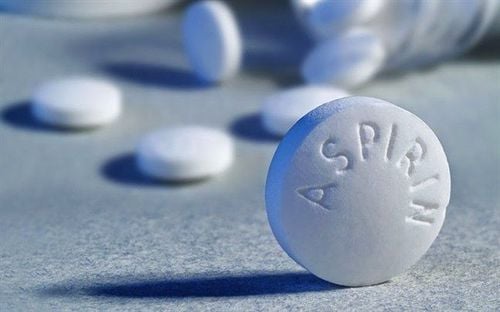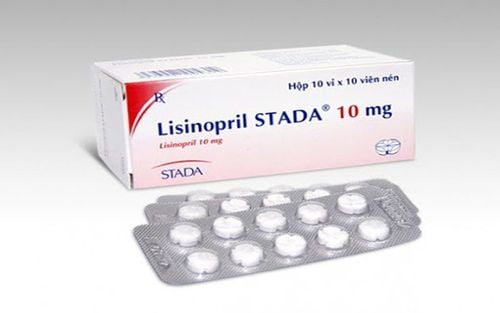This is an automatically translated article.
Halotan 160 is made in the form of tablets, with the main ingredient being Valsartan. The drug is used in the treatment of hypertension, heart failure and treatment after myocardial infarction.
1. Uses of Halotan 160
Halotan medicine has many strengths such as Halotan 40mg (each tablet contains 40mg Valsartan), Halotan 80mg (each tablet contains 80mg Valsartan), Halotan 120mg (each tablet contains 120mg Valsartan) and Halotan 160mg (each tablet contains 160mg). Valsartan). This article mainly focuses on Halotan 160mg pills. The Valsartan component in Halotan is an orally administered drug that blocks the vasoconstrictor and aldosterone-secreting effects of angiotensin II by selectively blocking angiotensin II from binding to the AT1 receptor. An increase in plasma angiotensin II concentrations when the AT1 receptor is inhibited by valsartan may lead to activation of the AT2 receptor (which has a balancing effect with the AT1 receptor). Valsartan does not inhibit the ACE (kininase II) which converts angiotensin I to angiotensin II and degrades bradykinin.
Indications for use of Halotan 160:
Treatment of heart failure, hypertension; Treatment after myocardial infarction: Patients with clinically stable condition, left ventricular failure or reduced left ventricular function after myocardial infarction. The use of Halotan 160 is contraindicated in the following cases:
Patients with hypersensitivity to Valsartan or any other component of the drug; Patients with severe liver failure, biliary cirrhosis, cholestasis; Pregnant mothers in the second and third trimesters of pregnancy.
2. How to use and dose Halotan 160
The drug is taken orally. The recommended dosage of the drug is as follows:
Hypertension: Start with an oral dose of 80-160mg/time/day if used as monotherapy. If combined with diuretics, use a lower dose. The maximum dose is 320mg/day; Heart failure: Start with an oral dose of 40mg/time x 2 times/day. Dosage can be increased to 80-160mg/time x 2 times/day. If combined with diuretics, use a lower dose. The maximum dose is 320mg/day; Post-MI: Valsartan can be started as early as 12 hours after MI in clinically stable patients. The starting dose is 20mg/time x 2 times/day. Patients receiving Halotan should be titrated within 7 days, up to 40 mg twice daily and then titrated to the effective maintenance dose, up to 160 mg twice daily depending on the patient's condition. according to patient tolerance; Elderly: No dose adjustment is required; Patients with renal impairment: No dose adjustment is required in patients with creatinine clearance above 10ml/min; Patients with hepatic impairment: In patients with mild to moderate hepatic impairment, without cholestasis, the maximum dose of valsartan is 80 mg. Contraindications to the use of Valsartan in patients with severe hepatic impairment and biliary cirrhosis; Hypertension in children 6-16 years of age: For children who can swallow tablets whole, the usual starting dose is 1.3mg/kg once daily (total dose up to 40mg). Dosage will be adjusted according to the patient's blood pressure. There are currently no data on the use of doses of 2.7 mg/kg (up to 160 mg) in pediatric patients 6 to 16 years of age; Children under 6 years old or glomerular filtration rate less than 30ml/min/1.73m2: There is no information on the use of drugs for this subject. When using Halotan 160 drug overdose, patients may experience hypotension, tachycardia, bradycardia may occur if there is parasympathetic (vagal) stimulation. In addition, the patient may experience depression, circulatory collapse, and shock. Treatment is symptomatic and supportive when hypotension occurs. Valsartan is not eliminated from the body by dialysis.
3. Halotan 160 . side effects
When using Halotan 160, patients may experience some side effects such as:
Common: Headache, dizziness, sore throat, back pain, abdominal pain, fatigue, decreased blood pressure, urinary tract infection upper respiratory tract, myalgia, hyperkalemia, dry cough, nausea, sinusitis, gastrointestinal disturbance, arthralgia, edema, palpitations, itchy skin, rash, dry mouth, dyspepsia, constipation, fullness gas, diarrhea, insomnia, anxiety; Uncommon: Dizziness, abdominal pain, fatigue, cough; Rare: Angioedema, hepatitis, thrombocytopenia, rhabdomyolysis. Patients should inform their doctor about the side effects encountered when using Halotan 160 for advice on appropriate countermeasures.
4. Be careful when using Halotan 160
Some notes patients need to remember before and while taking Halotan 160:
When taking Halotan, the patient may have hyperkalemia. Therefore, the concomitant use of potassium supplements, potassium-containing salts, potassium-sparing diuretics or agents that increase potassium levels (such as heparin) is not recommended; Halotan should be used with caution in patients with intravascular volume depletion (eg, due to the use of high-dose diuretics); Use caution when using Halotan 160 in patients with renal artery stenosis or severe renal impairment; There are currently no data on the safe use of Valsartan in patients who have recently undergone kidney transplant surgery; Patients with primary hyperaldosteronism should not be treated with valsartan because the renin-angiotensin system is not activated; In patients with mild to moderate hepatic impairment without cholestasis, Valsartan can be used with caution; When treating patients with myocardial infarction, valsartan should not be used in combination with ACE inhibitors because it will increase adverse side effects; When treating patients with heart failure, valsartan should not be combined with ACE inhibitors and beta-blockers because of the potential for increased adverse effects; Halotan 160 is a specific angiotensin II receptor antagonist, not recommended for use during pregnancy and lactation; Halotan drug can cause dizziness, headache, so caution should be exercised when using the drug while driving or operating machinery.
5. Halotan 160 . drug interactions
Some drug interactions of Halotan 160 include:
Concomitant use of ACE inhibitors with Lithium may increase serum lithium concentrations and Lithium toxicity. Due to the lack of information on the concomitant use of Valsartan and Lithium, it is best not to combine the two drugs; Concomitant use of Valsartan with potassium-sparing diuretics, potassium salts or potassium supplements may increase the concentration of potassium in the blood; Concomitant use of valsartan with non-steroidal anti-inflammatory drugs may increase serum potassium levels and increase adverse effects on renal function. During the use of Halotan 160, patients should strictly follow the instructions and instructions of the doctor to ensure the best treatment effect and reduce the risk of adverse side effects.
Please dial HOTLINE for more information or register for an appointment HERE. Download MyVinmec app to make appointments faster and to manage your bookings easily.













